Puerto rico celebrations and traditions: Annual Festivals and Events in Puerto Rico
Six Puerto Rican Festivals You Can’t Miss
It’s always a party in Puerto Rico, where holidays and traditions are celebrated with loud music, delicious food, and a lot of fun. Attending a festival is a great way to immerse yourself in the local culture and party with the islanders. You can find an exciting event almost every week, but there are some iconic celebrations that you just can’t miss when visiting the island. Here are the most exciting Puerto Rican festivals!
Three Kings Day
While Christmas is celebrated in Puerto Rico, the festivity the locals look forward to the most is Three Kings Day, or El Día de los Tres Reyes Magos. Observed on January 6, this holiday is a celebration of the arrival of the Three Wise Men, who brought gifts to the newborn Jesus. This is the day when Puerto Rican children receive holiday presents, and they would traditionally leave grass or hay at the foot of their beds for the kings’ camels to enjoy.
In addition to family celebrations at home, you can find parades and festivals all over the island. The Three Kings travel from Juana Díaz, making stops all over the island. Their most popular appearance is at Luis Muñoz Marín Park in Old San Juan. The festivities are full of food, music, and merriment, and you can’t miss them if you love the holidays.
The Three Kings travel from Juana Díaz, making stops all over the island. Their most popular appearance is at Luis Muñoz Marín Park in Old San Juan. The festivities are full of food, music, and merriment, and you can’t miss them if you love the holidays.
San Sebastián Street Festival
The January festivities continue with the San Sebastián Street Festival, or Fiestas de la Calle San Sebastián. This popular festival is one of the largest outdoor parties on the island, celebrating the unofficial end of the holiday season during the third week of January. The party goes from Wednesday evening until Sunday afternoon. San Sebastián Street fills up with food stalls, arts and crafts, alcoholic beverages, circus performances, and live music, inviting locals and visitors alike to join the spontaneous dancing on the street.
The most exciting sight during the festival is the parade of the Cabezudos, which are people in huge masks and big-headed puppets that represent characters in Puerto Rican folklore.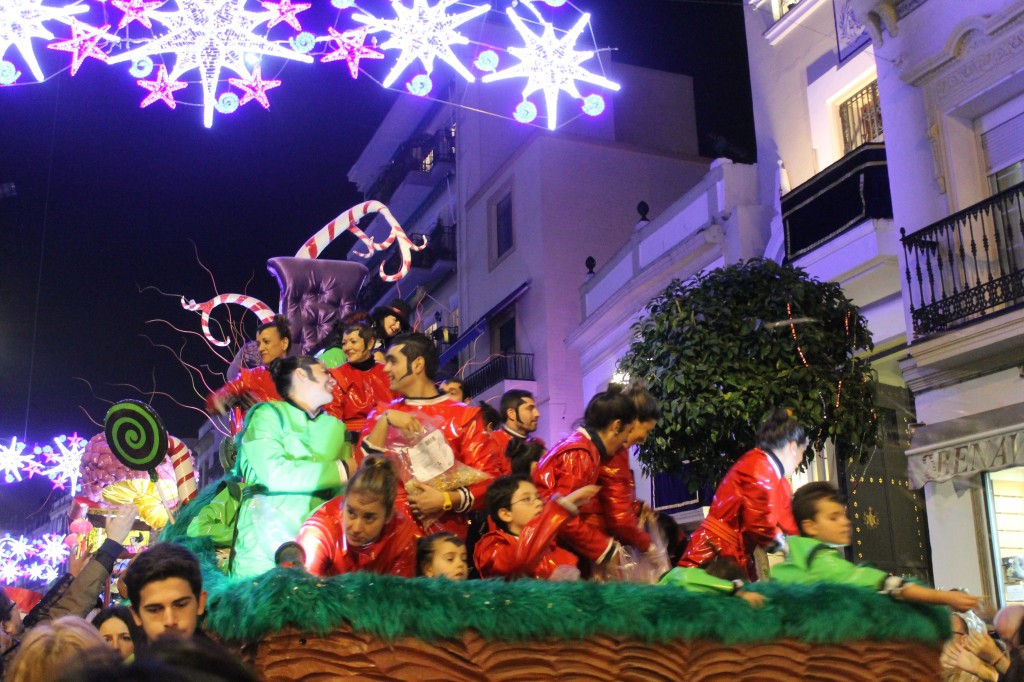 The parade kicks off the festivities with traditional plena drums and a marching band, and it quickly turns into a party when spectators join in to dance. This is one of the best festivals of the year!
The parade kicks off the festivities with traditional plena drums and a marching band, and it quickly turns into a party when spectators join in to dance. This is one of the best festivals of the year!
Ponce Carnival
Carnaval Ponceño is one of the oldest traditions on the island. This week-long festival begins during the last week of February and ends on the Tuesday before Ash Wednesday. This is one of the most vibrant Carnival celebrations in the world, featuring traditional bomba and plena music — two types of percussion-driven music that derive from African influences.
A major staple at the Ponce Carnival are the vejigantes, costumed characters adorned in elaborate demon masks made of papier-mâché. The mood is raucous and celebratory, with lively music, plenty of dancing, and colorful masks. Other traditions include the appearance of King Momo and the coronation of the Carnival Queen.
The most unique moment during the festival is the Burial of the Sardine, a mock funeral procession that marks the beginning of Lent. The procession is led by drag queens and fake mourners who carry a dummy in a coffin. If this sounds like exactly the kind of boisterous fun you’re looking for, make your way to the island in time for the Ponce Carnival!
The procession is led by drag queens and fake mourners who carry a dummy in a coffin. If this sounds like exactly the kind of boisterous fun you’re looking for, make your way to the island in time for the Ponce Carnival!
Casals Festival
The annual Casals Festival is a celebration of classical music and an homage to world-renowned cellist Pablo Casals. Casals was born in Spain, and he moved to Puerto Rico, where his mother was born, in 1956. He organized the first Casals festival in 1957 with 11 classical music concerts all over San Juan. The tradition continues with an annual festival that features the Puerto Rico Symphony Orchestra along with musicians from around the world.
The Casals Festival is recognized as one of the major celebrations of classical music in the Caribbean. The performances take place over a number of weeks, usually beginning in March, and are hosted at the San Juan Performing Arts Center. This beloved festival is attended by lovers of music and culture from around the world, and it’s a truly inspiring experience.
Saborea Puerto Rico
This annual food festival is a culinary extravaganza that brings together famous chefs from around the world to cook alongside some of the best chefs on the island. Traditional Puerto Rican foods are enjoyed along with modern takes on the local ingredients and delicious culinary creations with international influences.
Usually held over a weekend in April or May, Saborea is one of the most highly anticipated culinary festivals in the Caribbean. In addition to mouthwatering bites, you can enjoy local rum, beer, wine, and cocktails. This is the ultimate Puerto Rico experience for foodies.
Noche de San Juan
Noche de San Juan, or Saint John’s Eve, is a unique unofficial holiday observed on June 23 to celebrate the birth of Saint John the Baptist. While many Puerto Rican festivals take place on the city streets, this holiday is celebrated on the beach. As midnight approaches, locals line up at the edge of the water, ready to plunge in backward at the stroke of midnight to rid their lives of negativity and bring good luck.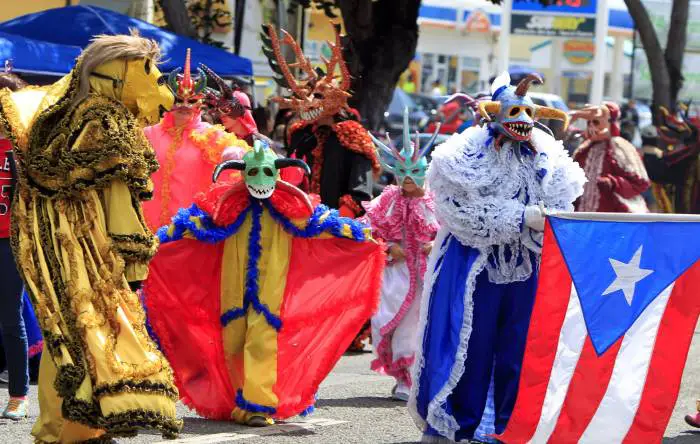 It’s traditional to take 7 plunges, although personal traditions vary from 3 to 12.
It’s traditional to take 7 plunges, although personal traditions vary from 3 to 12.
If you want to join in, make sure to arrive at the beach early to scout out a good spot on the shore. Many local bars and hotels throw parties for Noche de San Juan, and you can usually find more room at a hotel beach. However, it’s more fun to join the locals to get the full experience of Noche de San Juan.
There’s so much to celebrate in Puerto Rico, a country full of iconic traditions, culture, music, and food. Get a taste of life on the island and celebrate with the locals! Whether you’re a foodie, a music aficionado, or you just love the holidays, there’s a festival waiting for you in Puerto Rico. Make sure to plan your trip at the perfect time to attend the festival of your dreams. And while you’re on the island, be sure to enjoy a tour to see everything Puerto Rico has to offer!
Browse Puerto Rico Tours & Activities
Browse Puerto Rico Tours & Activities
How Many of These 7 Puerto Rico Traditions Do You Know?
Destguides may receive commissions from purchases made through affiliate links in this article.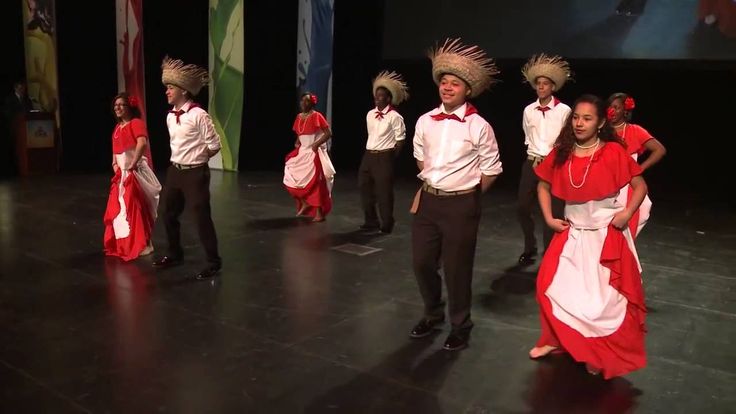
© dbvirago via Canva.com
The beautiful San Juan coastline, the capital of Puerto Rico
Located just off the coast of the United States, Puerto Rico is an unincorporated territory of the United States in the Caribbean. One main island, four smaller islands, and lots of cays and islets make up the territory, with San Juan as its capital.
Many of the customs in Puerto Rico have been heavily influenced by the territory’s Spanish and African roots, which go back for hundreds of years. So…
What are some traditions in Puerto Rico? You may ask…
This list of Puerto Rico traditions covers everything from the many customs of Christmas to a coming-of-age ritual for young women and more.
Are you ready to discover Puerto Rico through its traditions and customs? Then continue reading to learn about Puerto Rico.
7 Puerto Rico traditions
7 Puerto Rican Traditions
- Traditional Christmas celebrations last around 45 days
- Girls will have an extravagant Quinceañera party when they turn 15 years old
- Calle San Sebastian Street Fair celebrates the end of the Christmas season
- The Puerto Rican Day Parade in New York City is attended by thousands of people
- January 6th is Three Kings Day
- Puerto Ricans love to clap when a plane lands
- Puerto Ricans celebrate Noche de San Juan (Saint John’s Eve)
TRADITION 1
© Sean Pavone via Canva. com
com
There are many Puerto Rico traditions that revolve around Christmas
Traditional Christmas celebrations last around 45 days
Puerto Ricans take their Christmas celebrations incredibly seriously. The traditional Christmas season, known as La Navidad, lasts for around 45 days on the island. Festivities begin right after Thanksgiving in November and last through until mid-January.
During the Christmas season, Puerto Ricans have many famous traditions that they complete each year. One of the most popular is taking part in Parranda, which is their version of a Christmas Carol.
Family and friends will gather in front of a home after 10 pm to sing together, which will lead to neighbors joining and sharing drinks between families. Often, this can last until the sun comes up, going from house to house.
TRADITION 2
Quinceañeras are a tradition in many Latin American countries, and Puerto Rico is no exception. When a girl turns 15, she marks the important transition of becoming a woman by throwing a huge party to celebrate her birthday.
While this was one of the family traditions that was originally a religious symbol, today, many people decide to have a Quinceañera whether they are religious or not.
Three main things need to be present at a traditional Quinceañera:
- A religious ceremony where the girl’s faith is blessed.
- A waltz with her father.
- Dinner and drinks to celebrate in style.
The party can last anywhere up to six hours.
Of course, the dress is another key element of a Quinceañera, with many girls opting for big and bold dresses. The dress will also correspond with a color scheme, which is a really important factor when planning a Quinceañera.
TRADITION 3
© Joseburgos via Canva.com
People enjoying the atmosphere at the Calle San Sebastián Street Festival
Calle San Sebastian Street Fair celebrates the end of the Christmas season
There are plenty of Puerto Rican traditions that take place during Christmas, but a giant street fair signals the end of the festive season.
Named after Saint Sebastian, a religious martyr, San Juan is home to a festival that honors him through feasts and street parties. The event draws in large crowds from Puerto Rico and beyond.
The first-ever Calle San Sebastián Street Festival took place in the 1950s after a priest organized the event. This lasted for a few years, but eventually, the festival stopped taking place until it was restarted in the 1970s.
Since then, the festival has taken place towards the end of January each year, although the date often changes. If you’re here during that time, make sure to include it on your Puerto Rico itinerary!
TRADITION 4
© PeskyMonkey via Canva.com
Puerto Rican Day Parade is one of the largest parades in New York
The Puerto Rican Day Parade in New York City is attended by thousands of people
New York has a Puerto Rican population of around 1 million, which is the second largest in the whole territory. Each year, thousands of these citizens will attend the parade in New York City, taking place on an iconic Fifth Avenue location.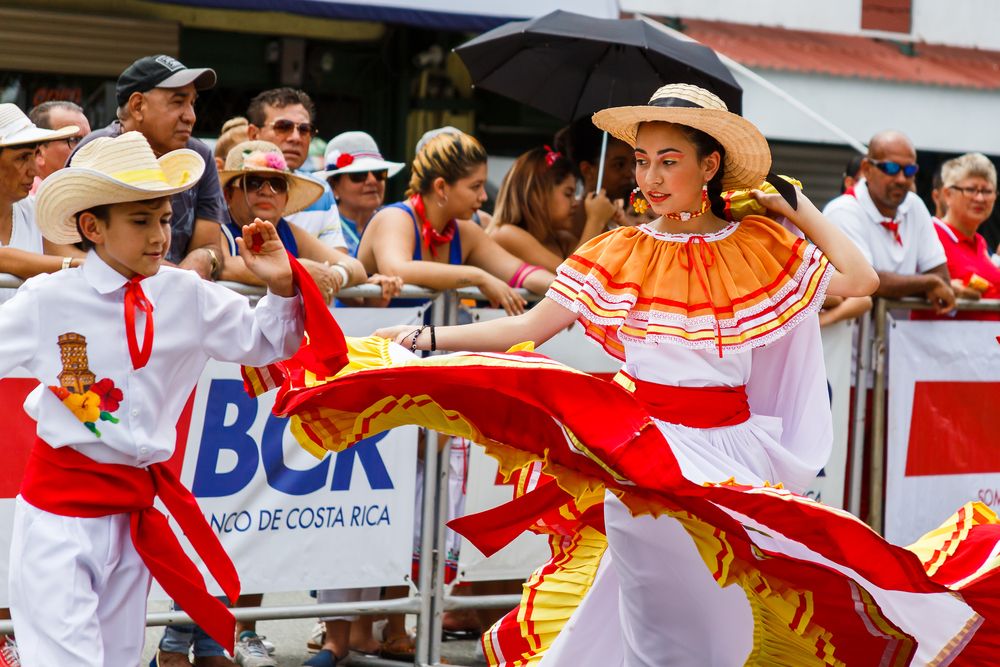
The parade celebrates the entire Puerto Rico population in the US and is commemorated with music, dancing, and authentic street food. The date changes each year, but famous Puerto Rican guests always attend and kick off the party.
Many states host similar parades, although the New York one is arguably the most famous and lively, streamed by millions across the world.
TRADITION 5
January 6th is Three Kings Day
Every year, Puerto Ricans celebrate el Día de Reyes, or Three Kings Day, which is also known as Epiphany. This is another of the many religious customs in Puerto Rico and is to honor the Three Wise Men who visited Jesus not long after he was born.
Most of the el Día de Reyes celebrations happen in a small town, south of the main island called Juana Diaz. A big parade is held here for around 25,000 people, although smaller parades are still present throughout the territory.
A fun re-enactment of the Three Kings visiting Jesus is depicted during the event by actors with cartoonish beards and colorful costumes.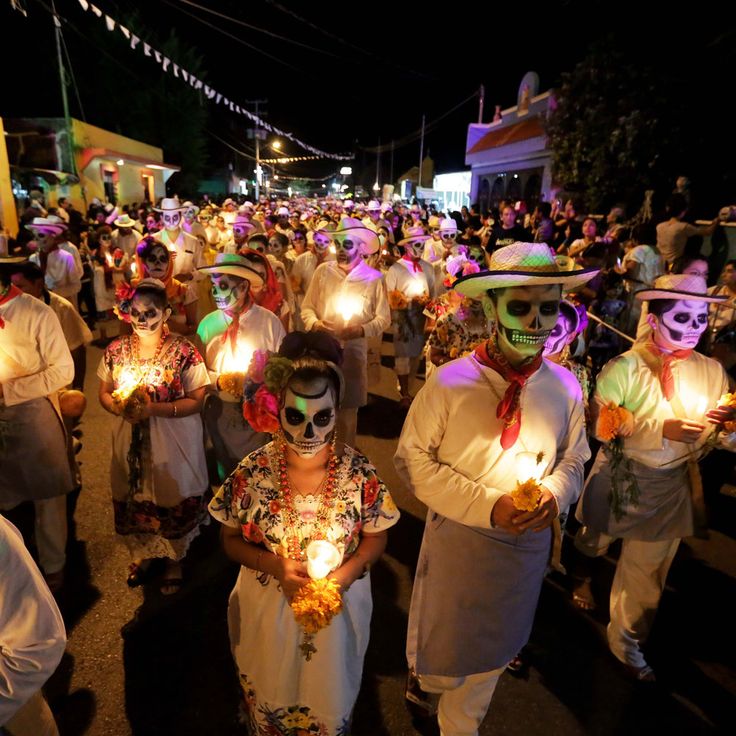 Many families also choose to celebrate in private, sharing delicious food and stories.
Many families also choose to celebrate in private, sharing delicious food and stories.
TRADITION 6
Puerto Ricans love to clap when a plane lands
Although clapping when the plane lands has a hit or miss reputation throughout the rest of the world, it is one of the most common Puerto Rican customs.
When you touch down in San Juan, don’t be surprised when everyone around you begins to applaud. Nobody is quite sure why they love to do this, including many Puerto Ricans themselves.
Some people claim it is because they are happy to be safely back on land, while others state that it’s because they want to applaud the pilot. Either way, it’s a very sweet aspect of Puerto Rican culture that you will notice when you visit the island.
TRADITION 7
© A Bello via Canva.com
Puerto Rico was initially named after the saint San Juan Bautista
Puerto Ricans celebrate Noche de San Juan (Saint John’s Eve)
Religion plays a huge role in many of the traditions in Puerto Rico, so the island celebrates many Roman Catholic holidays. The 23rd of June is Saint John’s Eve, and after sunset, many families will participate in religious customs.
The 23rd of June is Saint John’s Eve, and after sunset, many families will participate in religious customs.
It’s called “La Noche de San Juan” because Christopher Columbus originally named Puerto Rico San Juan Bautista after the saint.
The main tradition takes place near water. People will travel to a beach, pool, or lake and fall back into the water three, seven, or twelve times. This is said to cleanse the body of any bad luck and create new luck for the following year.
In Summary
Puerto Rico is a joyous island with a fascinating history and vibrant culture. Many of these Puerto Rico traditions have been influenced by the people who have called the archipelago home over several centuries.
From all-night Christmas caroling to indulgent Quinceañera parties, these rich traditions are important to people throughout the island.
Make sure to keep an eye out for these customs when you visit, and you will be able to learn more about Puerto Rico and its culture.
This article was edited by
Loredana Elena.
Give us feedback about this article
For more interesting articles about Puerto Rico, read:
- 15 Best Places to Snorkel in Puerto Rico
- 20 Best Excursions in Puerto Rico for All Types of Travelers
- 25 Famous Landmarks in Puerto Rico You Can’t Miss
- The Perfect 7 Day Puerto Rico Itinerary for Families
For visual stories related to this article, take a look at:
- How Many of These 7 Puerto Rico Traditions Do You Know? Story
- 7 Interesting Puerto Rico Culture Facts You Should Know
National traditions in Puerto Rico
- City guide
- Cities and regions
- Vieques Island
- Ponce
- Attractions
- Culture: what to see
- Puerto Rico Festivals
- Active recreation
- Entertainment, nightlife
- Parks and landscapes
- Soul of Puerto Rico
- Kitchen and restaurants
- Traditions and coloring
- Festivals and holidays
- Languages and religions
- Leisure with children
- Shopping and shops
- Travel tips
- Maps of Puerto Rico
- Printed cards
- Interactive map
- Useful info
- How to get around better
- Nature Puerto Rico
- When to visit – climate
- Languages and religions
- Political structure
- National economy
- Hotel reservations
- Car rental
Puerto Rico Hotels
The population of Puerto Rico is an enchanting mixture of races and cultures.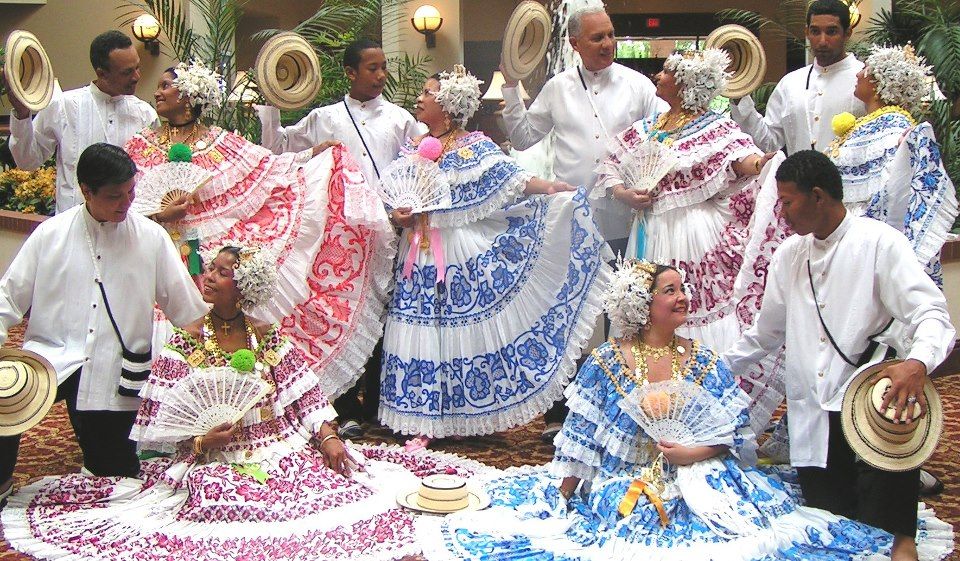 Most Puerto Ricans have Spanish, Afro-Caribbean, and Tianan blood in their veins. Puerto Ricans are always open, friendly and hospitable. Family members and close friends, if they are two women or a woman and a man, usually kiss each other on the cheeks and hug when meeting and parting, and it is customary to shake hands when they first meet. The facial expressions and gestures of the inhabitants of Puerto Rico are very expressive. Puerto Ricans love to chat with friends, relatives, neighbors, acquaintances and even strangers. In 2005, the Swedish organization World Values Survey named Puerto Ricans the happiest nation.
Most Puerto Ricans have Spanish, Afro-Caribbean, and Tianan blood in their veins. Puerto Ricans are always open, friendly and hospitable. Family members and close friends, if they are two women or a woman and a man, usually kiss each other on the cheeks and hug when meeting and parting, and it is customary to shake hands when they first meet. The facial expressions and gestures of the inhabitants of Puerto Rico are very expressive. Puerto Ricans love to chat with friends, relatives, neighbors, acquaintances and even strangers. In 2005, the Swedish organization World Values Survey named Puerto Ricans the happiest nation.
Prior to the colonization by the Spaniards, Indians from the Arawak tribe lived in Puerto Rico. The language of communication here was one – Taino. As a result of the cruel …
Open
Despite the rather traditional views on gender roles, there are now many women working in the fields of politics, sports and business in Puerto Rico. The gender culture is macho, and it is not uncommon for men on the streets to whistle or hiss at the woman who has attracted them, but never turn to harassment. At the same time, Puerto Rican men often hold doors open for women and give them seats on public transport. Puerto Rican women rarely take their husband’s last name. Children are often given double surnames from their father and mother.
The gender culture is macho, and it is not uncommon for men on the streets to whistle or hiss at the woman who has attracted them, but never turn to harassment. At the same time, Puerto Rican men often hold doors open for women and give them seats on public transport. Puerto Rican women rarely take their husband’s last name. Children are often given double surnames from their father and mother.
Most Puerto Ricans (over 80%) are Catholics. Some adhere to Protestantism, Spiritualism, Judaism, the Afro-Caribbean religion, a little more than 2% do not identify themselves with any religion. The country’s constitution guarantees freedom of belief. Due to the influence of the Catholic Church, homosexuality remains a taboo topic, same-sex relationships are not advertised. However, Puerto Ricans are generally tolerant of homosexuals, especially young people, and there are places in the capital where homosexuals can express themselves openly without fear of judgment.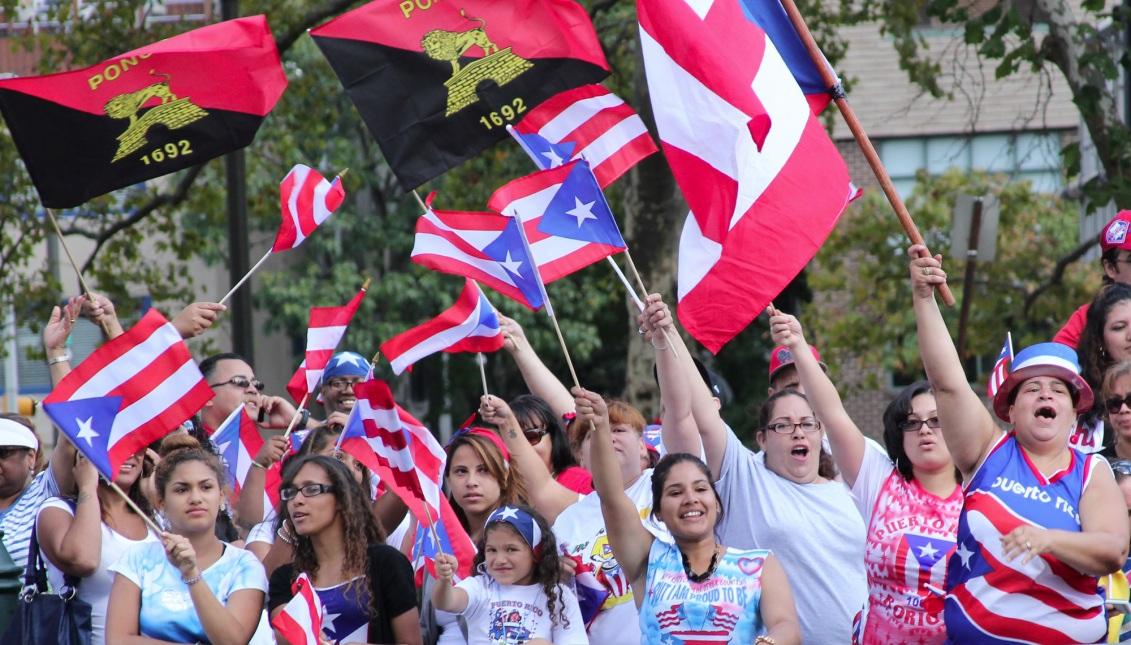 Copyright www.orangesmile.com
Copyright www.orangesmile.com
The economic development of our country has been difficult since the beginning of the Spanish colonization. Taino indigenous people were engaged in hunting, fishing and …
Open
For Puerto Ricans, family comes first. Families in the country are often large, they include, in addition to parents and children, also parents of parents, uncles and aunts, cousins and sisters. Godparents are considered second parents. Older people rarely end up in nursing homes, this is considered strange, and younger family members try to help the elderly and make their life in the family comfortable. It is not uncommon for a Puerto Rican’s important life decisions to be influenced by the opinions of family members. Relatives who live separately constantly communicate by phone and visit each other.
Adult Puerto Ricans usually live with their parents until they get married. It is not customary to move away from parents upon reaching the age of majority.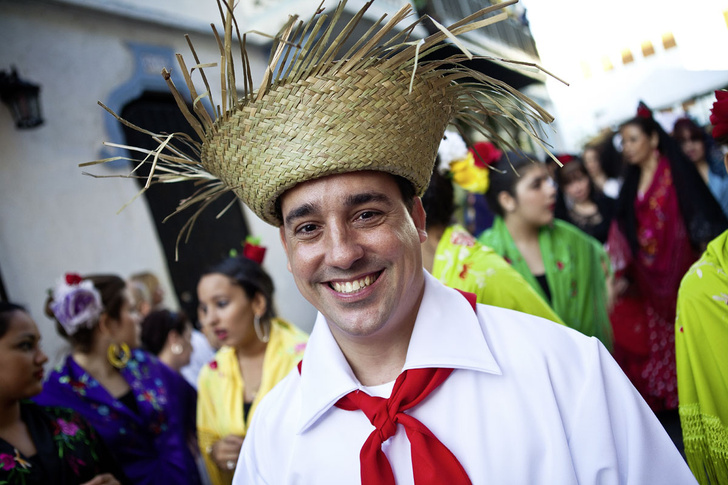 If the newlyweds want to live together, they settle not far from their parents, but often several generations live in the same house. Loyalty to family ties is very important and is placed above personal achievements. The inheritance is divided equally among the heirs, unless something else is specified in the will. Children are socialized in the family, in the yard, in kindergarten and school, as well as in churches. Puerto Ricans love and strive to protect not only their own, but also other people’s children. Physical punishment for misconduct is very rare.
If the newlyweds want to live together, they settle not far from their parents, but often several generations live in the same house. Loyalty to family ties is very important and is placed above personal achievements. The inheritance is divided equally among the heirs, unless something else is specified in the will. Children are socialized in the family, in the yard, in kindergarten and school, as well as in churches. Puerto Ricans love and strive to protect not only their own, but also other people’s children. Physical punishment for misconduct is very rare.
One of the most popular resorts, excellent architectural monuments have been preserved on the territory of the country, there are beautiful natural reserves and …
Open
Many Puerto Ricans value friendship as much as family ties and treat close friends like family, listen to their advice, and trust them completely. For young Puerto Ricans, friendships are increasingly taking precedence over family relationships. Moreover, the younger generations mostly listen only to their parents, considering other relatives to be secondary, especially if the latter do not live with them. But in general, the family continues to be important to most Puerto Ricans.
Moreover, the younger generations mostly listen only to their parents, considering other relatives to be secondary, especially if the latter do not live with them. But in general, the family continues to be important to most Puerto Ricans.
While Puerto Rico is a welcoming and friendly place, it’s important to remember that the country’s crime rate is high, especially in the big cities. Tourists should try to blend in with the locals so as not to attract the attention of potential robbers, scammers or kidnappers. It is a good idea not to go out after sunset, but to move around in the company of friends during the day. Walking alone should stay in crowded places. The main danger in the capital is drug traffickers, more precisely, their clients, capable of anything under the influence of drugs. Most criminals are armed with firearms.
This article about Puerto Rico traditions and culture is protected by the copyright law. Its use is encouraged, but only if the source is indicated with a direct link to www.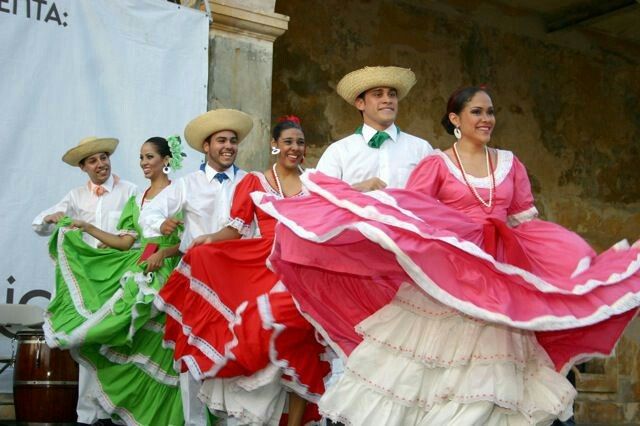 orangesmile.com.
orangesmile.com.
Puerto Rico – guide chapters
one
2
3
four
5
6
7
eight
9
ten
eleven
12
13
fourteen
fifteen
Country maps
Cars on OrangeSmile
A new original room will appear in the Treehotel
This year, another unique designer room will be available for living, the project of which was developed by the specialists of the Bjarke Ingels Group studio. A miniature room called “Biosphere”, whose area is 34 square meters. meters, is an unusual hanging house. The main feature is that wooden birdhouses will surround the structure from all sides, it is planned to place 350 of them in total.
Read
Famous places of Puerto Rico in pictures
Traditions and mentality of Puerto Rico regions
Ponce
During the six days before the start of the fast, locals have fun and enjoy their favorite food. Colorful costumed processions are an obligatory part of the carnival. It is believed that one of the founders of the annual carnival was the Spaniard José de la Guardia. The wealthy colonialist was one of the first to arrange a fancy-dress masquerade ball. The locals liked the idea of holding it so much that it turned into a large-scale and colorful celebration. By the holiday, locals are sure to … Read
Colorful costumed processions are an obligatory part of the carnival. It is believed that one of the founders of the annual carnival was the Spaniard José de la Guardia. The wealthy colonialist was one of the first to arrange a fancy-dress masquerade ball. The locals liked the idea of holding it so much that it turned into a large-scale and colorful celebration. By the holiday, locals are sure to … Read
Map of Puerto Rico cities with their own traditions
OrangeSmile.com is a provider of convenient and reliable online car and hotel booking solutions. We offer over 15,000 destinations with 25,000 rental locations and 500,000 hotels worldwide.
Secure connection
Head office
Weegschaalstraat 3, Eindhoven
5632 CW, The Netherlands
+31 40 40 150 44
User agreement (Terms of Service) |
Privacy Policy |
About company
Copyright © 2002 –
OrangeSmile Tours B. V. | OrangeSmile.com | Under the control of IVRA Holding B.V. – Registered with the Netherlands Chamber of Commerce: Kamer van Koophandel (KvK), The Netherlands No. 17237018
V. | OrangeSmile.com | Under the control of IVRA Holding B.V. – Registered with the Netherlands Chamber of Commerce: Kamer van Koophandel (KvK), The Netherlands No. 17237018
Puerto Rico Puerto Rico
Puerto Rico is a freely associated state, a territory dependent on the United States in the Caribbean Sea (Great Antilles).
Language.
Spanish, English.
Time.
Seven hours is the difference between Moscow and San Juan.
Population.
3.195 million people (2018). Ethnic composition: Europeans, Africans, Indians.
Religion.
Approximately 85% of Puerto Ricans profess Catholicism, 10% – Protestantism, there are followers of spiritualism, the African religion of voodoo, Indian traditions.
Climate.
Passat, tropical. The average annual air temperature is about + 24 C … + 28 C, in summer it is a little hotter, up to + 30 C.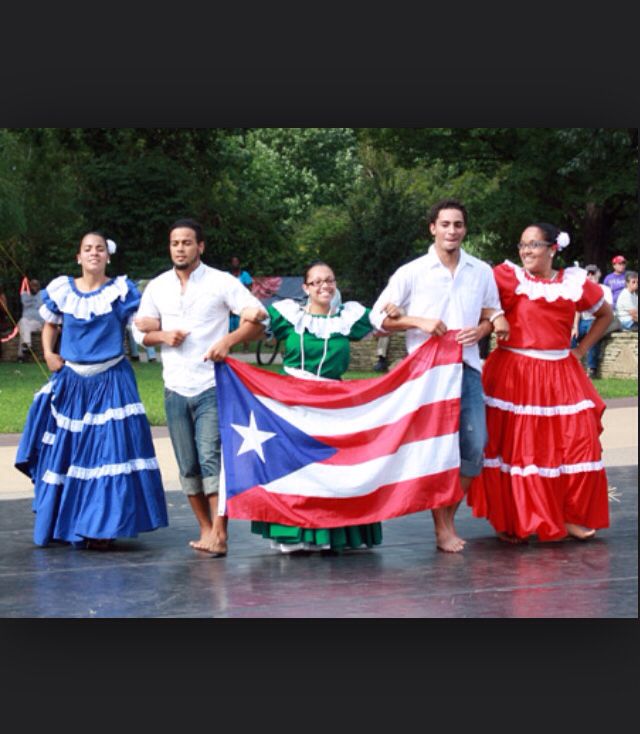 At night in the mountains it can be several degrees cooler.
At night in the mountains it can be several degrees cooler.
Precipitation: from 800 to 2500 mm per year. The hurricane season lasts from May to November, with showers and squally winds at 150 km/h.
Currency.
U.S. dollar.
Visa regime.
To enter the territory of Puerto Rico, Russians must apply for a visa at the US Embassy in the Russian Federation.
Customs regulations.
Foreign and national currency can be imported and exported unlimitedly. Declarations are subject to amounts over 10,000 dollars and gold.
It is forbidden to import any meat, absinthe, fish, eggs, plants, seeds, matches, lighters, weapons (see US law), narcotic substances, psychotropic drugs, cigars from Cuba, any things made and / or bought in some countries, for example , in Iran, Serbia, Libya, North Korea, Cuba.
Pets can be imported with an international veterinary passport and a certificate of vaccination against rabies.
Resorts.
Puerto Rico is a real paradise with all the conditions for a luxurious holiday. Due to the very comfortable climate on the island, you can relax all year round: sunbathe and swim, go sea fishing, have a great time in water parks, and engage in all kinds of water sports. Puerto Rico has many hotels, bars, nightclubs, shops, so that numerous tourists do not feel the need for anything.
The islands have three unique bioluminescent bodies of water: Mosquito Bay, La Parguera and Laguna Grande. At night, their water turns bright blue and green due to the presence of dinoflagellate microorganisms.
Natural attractions: the unique El Yunque Biosphere Reserve, Rio Camuy Cave Park, Parkguera Reserve.
The Bacardi factory is built on the islands, which produces the world-famous rum, and you can get there on a tour.
Kitchen.
The gastronomic habits of Puerto Rico are a mixture of the customs of Spain (heavy use of olive oil, meat dishes) and Africa (use of okra and taro, herbs).
Usually meat with vegetables and herbs is cooked in caldero pans. “Carne Guisada Puerto Rican” – beef meat with peppers and olives; “sancocho” – beef with vegetables; “carne frita con sebola” – pork meat with ham. Black bean soup; chicken with rice; “sopon de pescado” – a kind of sharp ear with tomatoes; The broths are often served with sausages from Spain – “chorisos”
Traditions.
The traditions of Puerto Rico are an explosive and vibrant mixture of the customs of African peoples, Spaniards, Indians and the United States, and on the islands, various rites peacefully exist side by side, and people get joy from them.
Puerto Rico knows how to have fun, just like on other Caribbean islands: the country hosts carnivals and holidays, costumed marathons and sports competitions. The most famous is the festival of San Sebastian at the beginning of the year: thousands of people go outside to sing, dance, drink rum and relax until the morning.